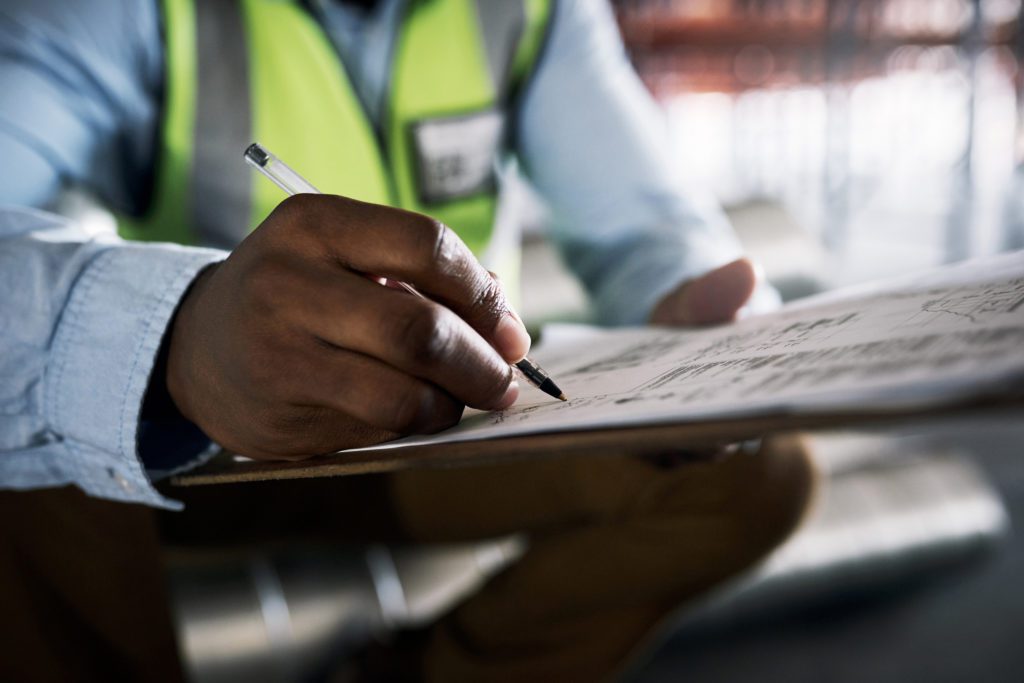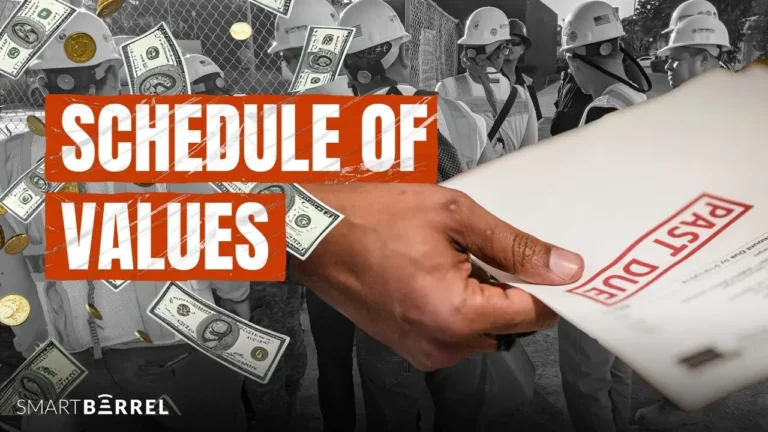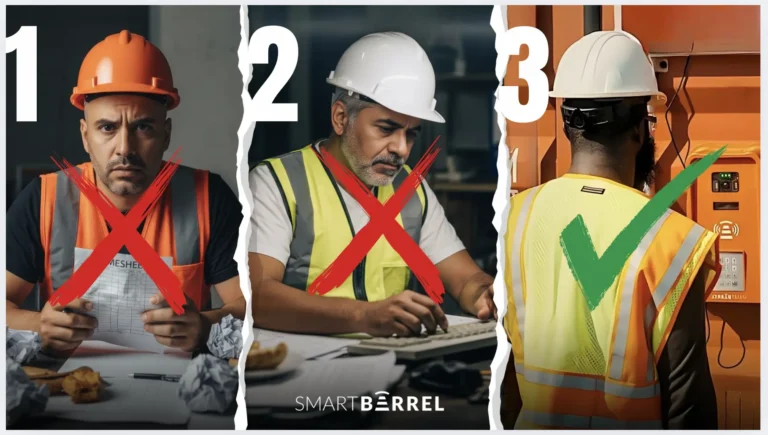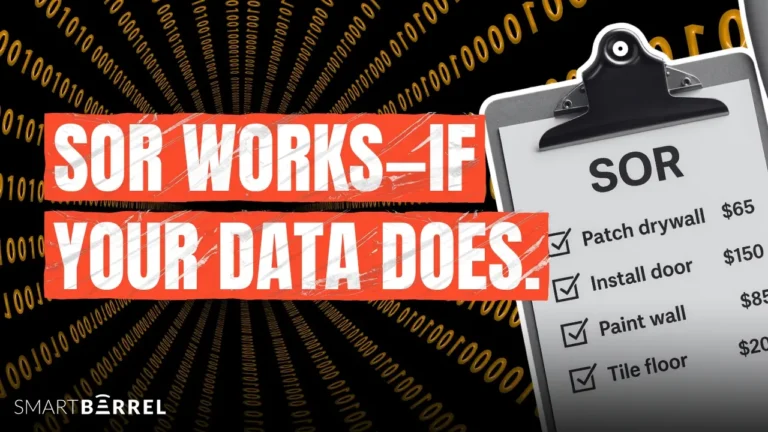Construction projects often face unexpected delays, weather constraints, and contractor issues. Depending on the issue, progress can be affected on the field and in the office, so it’s important to minimize these obstacles as much as possible. A large part of preventing these problems involves proper construction resource planning.
Resource management and planning—i.e., allocating resources and ensuring they’re effectively utilized—play a critical role in a project’s timely delivery. Knowing how to plan work, assign tasks, and provide the necessary time and knowledge to finish the job can keep crews productive and progress moving along.
Here’s how we define resource planning in construction, its benefits, and some tips for managing your project’s available resources. We also cover how the SmartBarrel device can help you with better labor management.
What is construction resource planning?
Construction resource management and planning involve actively mapping out, scheduling, and overseeing resource usage to ensure that a project’s main objectives are accomplished on schedule and within budget.
Planning and management are often used to determine if resources and labor are being sufficiently used for maximum efficiency, and how much capacity each team has to take on and complete certain tasks with precision.
Project managers can also use resource planning to determine:
- How many remaining resources are available
- Whether they need to hire more workers, or whether too many workers have been hired
- What resources can be reallocated due to unexpected events cropping up
- If resource conflicts exist and how to resolve them
The benefits of resource planning
Here are some of the ways projects benefit from resource management and planning.
Reduced expenses and costs
Going over budget is not an uncommon occurrence in construction, but it’s an issue that can result in inconveniences and unhappy stakeholders.
By planning out costs beforehand and regularly tracking spending, you can more easily avoid overruns and identify ways to cut back on expenses.
Additionally, if a project has gone over budget, knowing what resources you have can allow you to effectively apply the necessary corrective measures to get the project back on track.
Resource planning in construction gives you a better handle on available labor, equipment, and materials to prevent mismanagement, which often causes excess spending.
Increased productivity
Correctly allocating resources is important for maximizing workforce efficiency, which results in greater productivity. By strategically mobilizing resources, you’ll also reduce the likelihood of errors, preventing project delays.
Along with better labor management, proper equipment scheduling means less downtime, speeding up the rate at which tasks are completed.
Better resource visibility and preparation for contingencies
Planning out and consistently monitoring resources gives you greater visibility so you always know what’s ready and available. As a result, decision-making becomes more informed.
Consequently, resource planning helps you prepare for contingencies. When unanticipated events occur (which are all too common in the construction industry), knowing what you have lets you adequately reallocate what’s necessary to cover for unexpected needs, allowing you more flexibility in adapting to unforeseen changes.
4 tips for construction resource planning
So how do you start with effectively mapping out your project’s resources? Here are some things to consider and keep in mind when resource planning.
1. Ensure resources align with the project’s timeline
Once you’ve decided on the project’s timeline, solidifying details like outstanding tasks and deadlines, make sure you’ve accounted for the right amount of resources, allowing for the likelihood of contingencies.
There should also be leeway for scheduling, so you’re prepared for the possibility of material delivery delays, vehicles ending up at the wrong address, and workers who haven’t completed their mandatory safety training.
This will allow you to take a proactive approach to planning and management.
2. Realistically allocate resources
After calculating the number of resources required to complete the project, it’s important to be realistic in allotting them. Indicate, for example, when they’ll be needed and for how long. For this, project managers often draw from experience, follow industry standards, or use data from previous projects to come up with accurate estimates.
Remember to also account for the lifespan of equipment like tools and vehicles. Dealing with maintenance, repair, or replacement can put a project on hold, resulting in further delay.
3. Monitor and track resources effectively
Construction resource management is just as vital to the project as planning. After allocating resources, properly monitoring and tracking them can provide you with a comprehensive overview of your project.
Invest in technologies like the SmartBarrel device that allow you more efficient labor tracking. Digital timesheets auto-populated with accurate timekeeping information will let you know if workers are fulfilling their obligations by working enough hours. Manpower tracking also lets you know exactly what’s happening on site.
4. Re-optimize resources as needed
Along with preparing for the possibility of having to re-optimize your resources, it’s crucial for the project’s success to adequately carry it through. Although timelines and resource allocation should be approved before the project begins, flexibility is needed for unforeseen circumstances.
Sudden changes can affect productivity, increasing workload for crew members, so being open to re-adjusting and rearranging resources as needed can help with recovery.
How SmartBarrel helps with resource planning in construction
Resource planning in construction takes into consideration a lot of factors, including budgetary and time constraints. Modern technologies make the process of planning and monitoring your resources easier.
The SmartBarrel device helps with construction labor management by automating tasks and ensuring the validity of attendance and timekeeping.
Enhance your job site operations with fraud-free, headache-free, and excuse-free check-in for all workers through biometric facial verification. Manpower tracking shows all workers on the job, letting you see in real-time who’s on-site per trade, so you know for sure that your labor resources are being put to good use.
Plus, the SmartBarrel device verifies that all workers are wearing their personal protective equipment. It also confirms that all workers have completed their required safety training to prevent delays.
You can link the device to existing enterprise resource planning software to further streamline your processes. SmartBarrel integrates with Procore, CMIC, FoundationSoft, Viewpoint, and Autodesk.
Ready to take your resource planning to the next level? Request a demo with SmartBarrel today!






